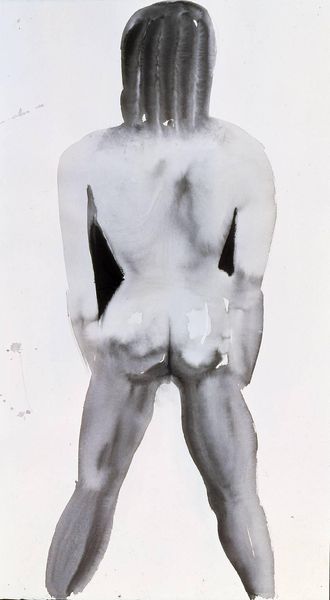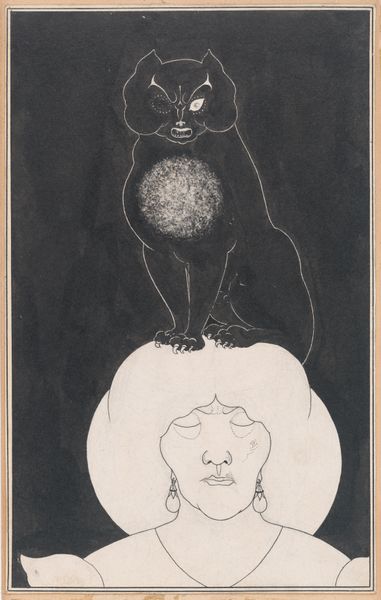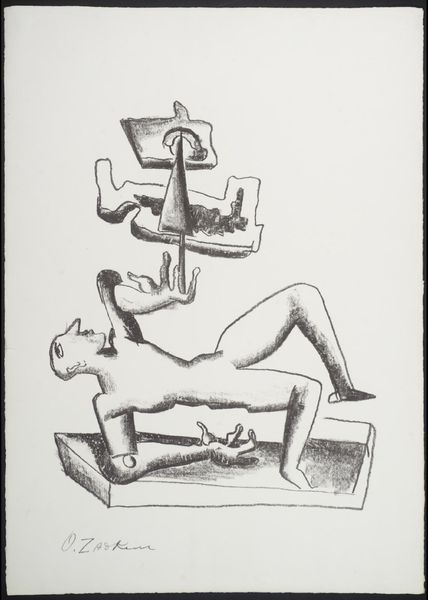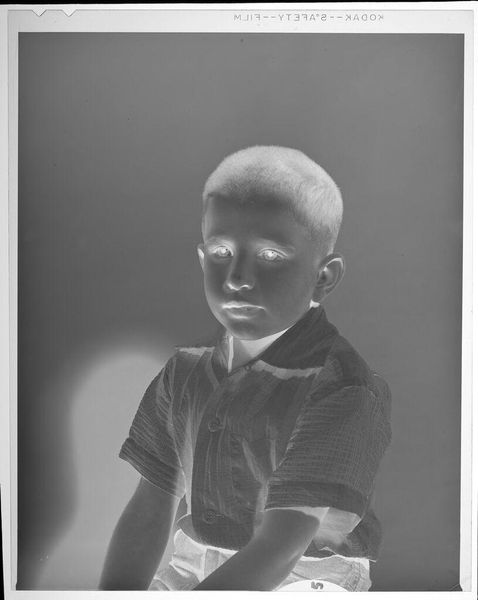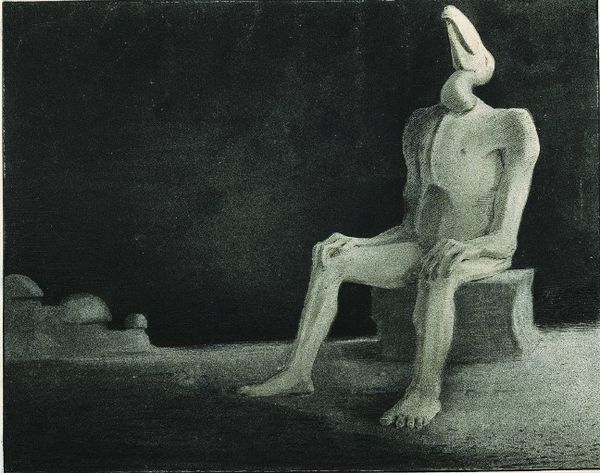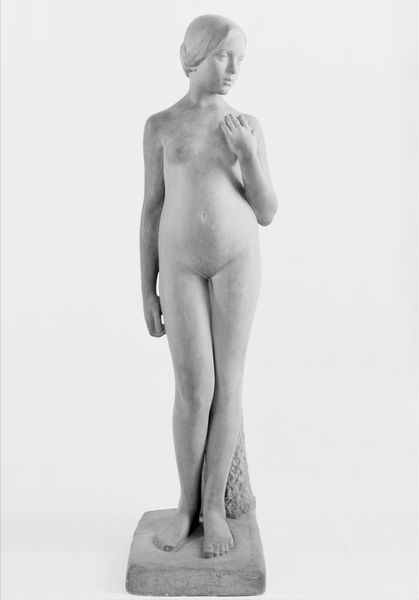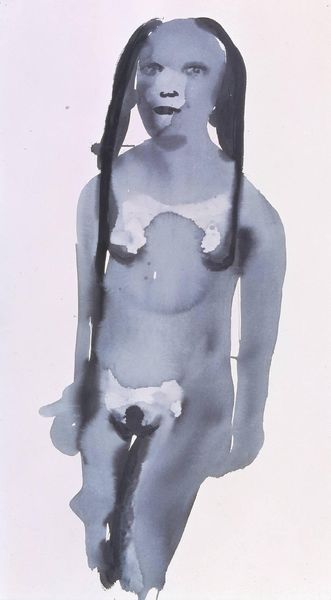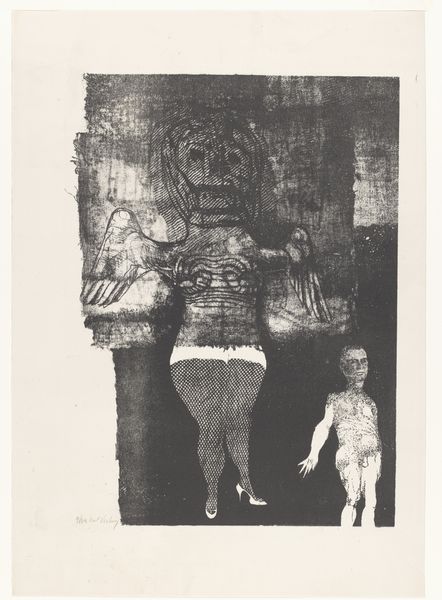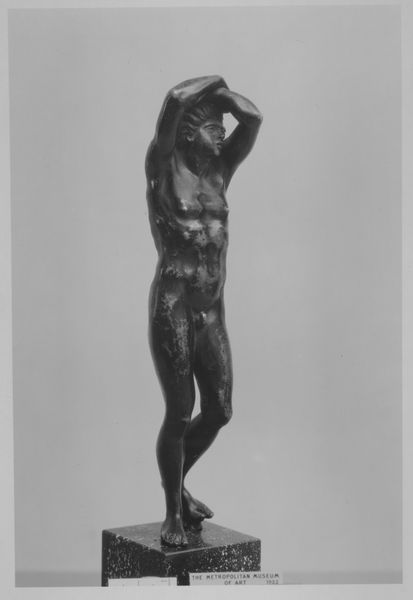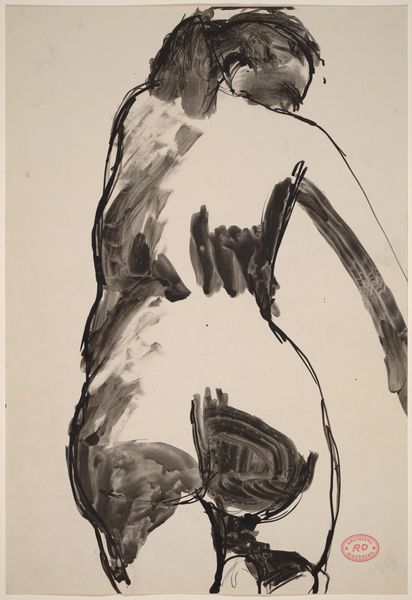
sculpture, wood
#
portrait
#
african-art
#
sculpture
#
figuration
#
sculpture
#
wood
Dimensions: sheet: 19.7 x 13.2 cm (7 3/4 x 5 3/16 in.)
Copyright: National Gallery of Art: CC0 1.0
Editor: Here we have Walker Evans’s photograph of a wooden headrest made in 1935 by the WaZimba and MaNyema people. It feels strangely monumental in this composition, a merging of the functional with something… totemic. What’s your take? Curator: I find myself drawn to its stillness. There’s an inherent contradiction here. This is an intimate object, something to cradle a resting head, but presented almost like an austere monument in Evans's shot. Do you see how the figure supports the headrest, not just structurally but almost spiritually? It’s a really moving interplay between support and burden, stillness and function. Editor: It almost seems sad, with the downturned eyes of the figure. Was it meant to depict someone specific? Curator: That's the fascinating part. These headrests weren't necessarily portraits, but more about invoking a presence, a connection to ancestors or spirits, perhaps lending protection or blessings during sleep. That form—the gentle curve where a head might lay – that's not just practical; it's a kind of hopeful gesture towards dreams, wouldn't you say? A silent promise of safe passage into the night. Editor: I hadn’t thought about the protective element – I was so focused on the figure. That adds a whole other layer. Curator: Right? It makes you think about what we value, what we entrust with our vulnerability. An object imbued with meaning becomes a silent guardian. I see in it the echo of whispered prayers and shared dreams. Editor: I’ll definitely see these types of objects differently now. It really puts functionality into another light.
Comments
No comments
Be the first to comment and join the conversation on the ultimate creative platform.

